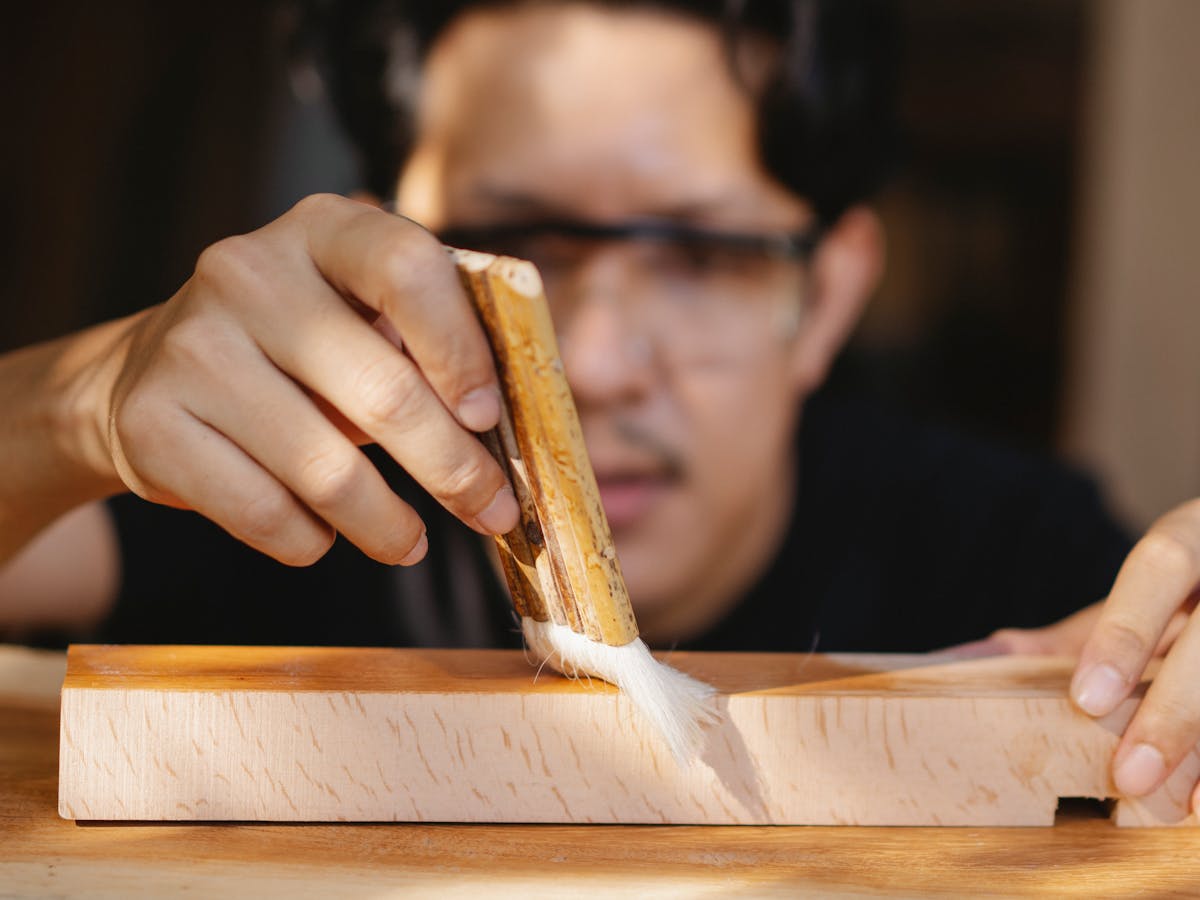Imagine the serene beauty of a freshly stained piece of wood, the rich hue enhancing its natural grain.
But how long should you wait between coats of stain to achieve that flawless finish?
The timing between applications can make or break your project, affecting its durability and aesthetic appeal.
So, what is the critical duration for the best results? Learn the essential aspect of the staining process to guarantee your project turns out just as you envisioned.
Ideal Wait Times Between Stain Coats
When applying stain, it’s important to adhere to specific wait times between coats for best results.
Different types of stains, such as Water-based stains, Oil-based stains, Gel stains, and Lacquer stains, have varying drying times that influence the ideal recoating time.
Water-based stains typically require 4-6 hours of drying time between coats to guarantee proper adhesion and a smooth finish.
Oil-based stains may need anywhere from 2 to 12 hours before applying a second coat, depending on the humidity and temperature of the environment.
Gel stains, on the other hand, can take up to 24 hours to dry between coats due to their thicker consistency.
In contrast, Lacquer stains dry quickly, often allowing recoating in about 15 minutes.
Following the manufacturer’s recommendations on timing is essential to achieving the best results for each type of stain.
Remember to apply thin coats to promote even drying and avoid issues with adhesion or finish quality.
Factors Affecting Stain Coats Timing
Moving from the ideal wait times between stain coats, understanding the factors that influence the timing for recoating is important for achieving best results in your staining project.
When considering the timing for applying the second coat of stain, the type of stain used is vital.
Water-based stains generally dry faster, requiring 3-4 hours between coats and 24-48 hours to fully cure.
On the other hand, oil-based stains may need 12-24 hours to dry between coats and up to 72 hours to cure completely. The application of thin coats of stain can also impact drying times.
Additionally, environmental factors such as low humidity can expedite the drying process. Lacquer stains dry rapidly, typically in about 15 minutes, but proper ventilation is essential during application.
Understanding these factors will help you plan the timing of your staining project effectively, ensuring a successful outcome when staining wood.
Common Wood Stains Drying Periods
Common wood stains have varying drying periods depending on their composition and application technique.
Water-based stains typically require 4-6 hours between coats to dry adequately.
In contrast, oil-based stains may need anywhere between 2-12 hours before recoating to guarantee proper adhesion to the wood surface.
If you’re using gel stains, be prepared to wait up to 24 hours between coats due to their thicker consistency.
On the other hand, lacquer stains dry remarkably fast, usually in about 15 minutes, allowing for swift application of multiple coats.
It’s essential to follow the manufacturer’s guidelines on drying times between coats to achieve a successful and durable finish.
Ensuring Stain Coat Dryness
To guarantee the best dryness of each coat of stain, be diligent in checking the recommended drying times indicated on the stain’s label before proceeding with additional applications.
Wood stain drying times can vary depending on the type of stain and environmental conditions.
Stains take different durations to dry and cure fully; some may need as little as a few hours, while others require a day or more.
Make sure the first coat is adequately dry before applying the second coat to prevent issues like tackiness or improper adhesion. It’s advisable to wait at least 24 hours before recoating to allow for proper drying and curing.
If you’re working in a humid environment, using a space heater can help accelerate the drying process.
Remember that pressure-treated wood, being more porous than hardwoods, may absorb stain differently and require additional drying time.
Always remove any excess stain to facilitate quicker drying and achieve a professional-looking finish.
Speeding Up Stain Drying Process
Looking to speed up the drying process of your wood stain application?
To accelerate the drying time, consider wiping off excess stain after 5-10 minutes of application.
Applying thin coats of stain not only guarantees a smoother finish but also helps it dry faster between coats.
If you’re looking to increase airflow, using a fan or a space heater can greatly speed up the drying process.
Additionally, mixing in drying agents like denatured alcohol or lacquer thinner can help expedite the drying process even further.
Remember to always check the label for specific drying times, as they can vary based on the type of stain you’re using.
Conclusion
In summary, the duration between coats of stain is vital for achieving a flawless finish.
By following recommended wait times, considering various factors that affect drying, and ensuring proper dryness, you can enhance the quality and longevity of your project.
Speeding up the drying process should be done cautiously to avoid compromising the final result.
Remember, patience and attention to detail are key in achieving a professional-looking stained surface.


Leave a Reply